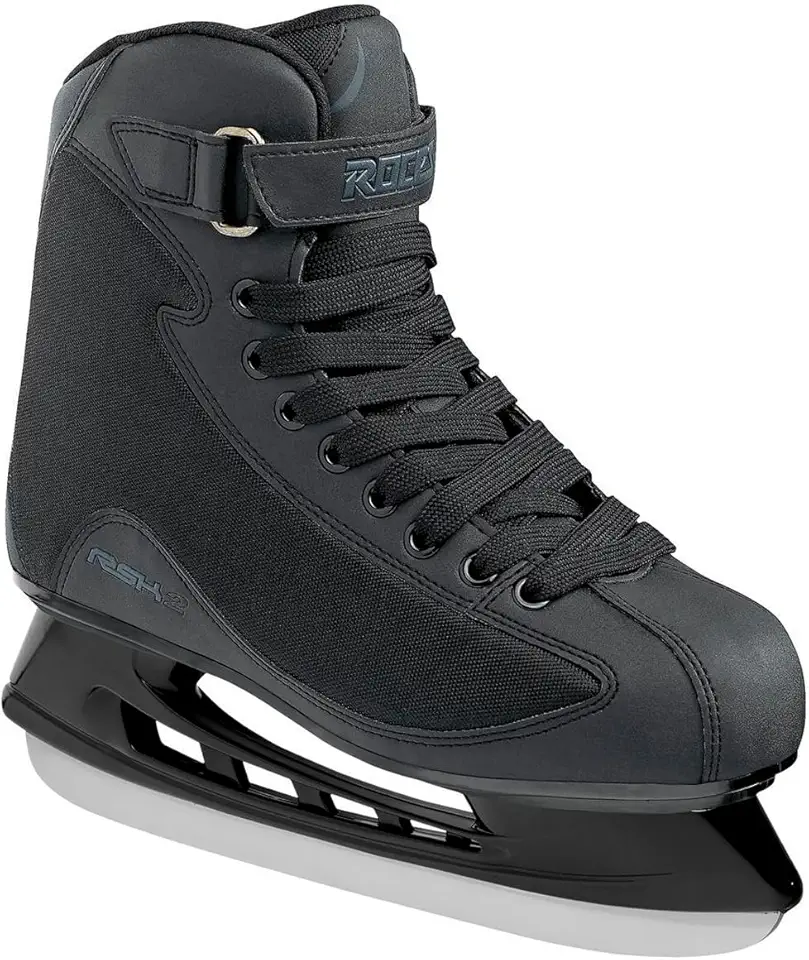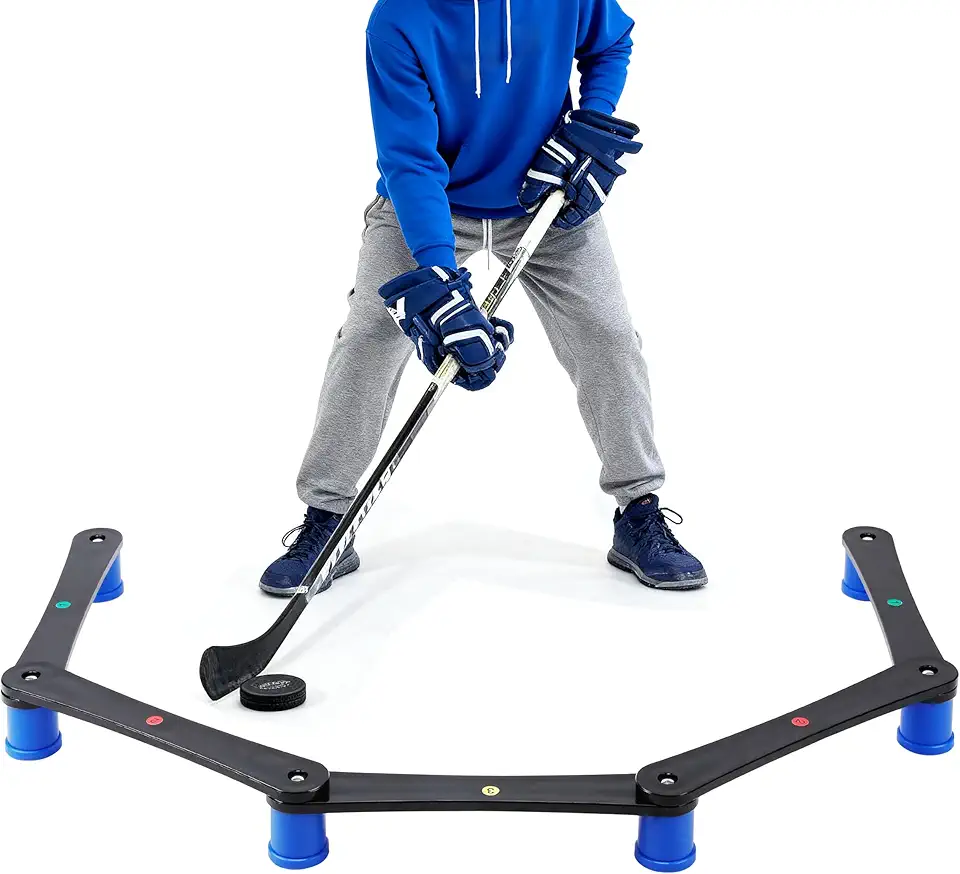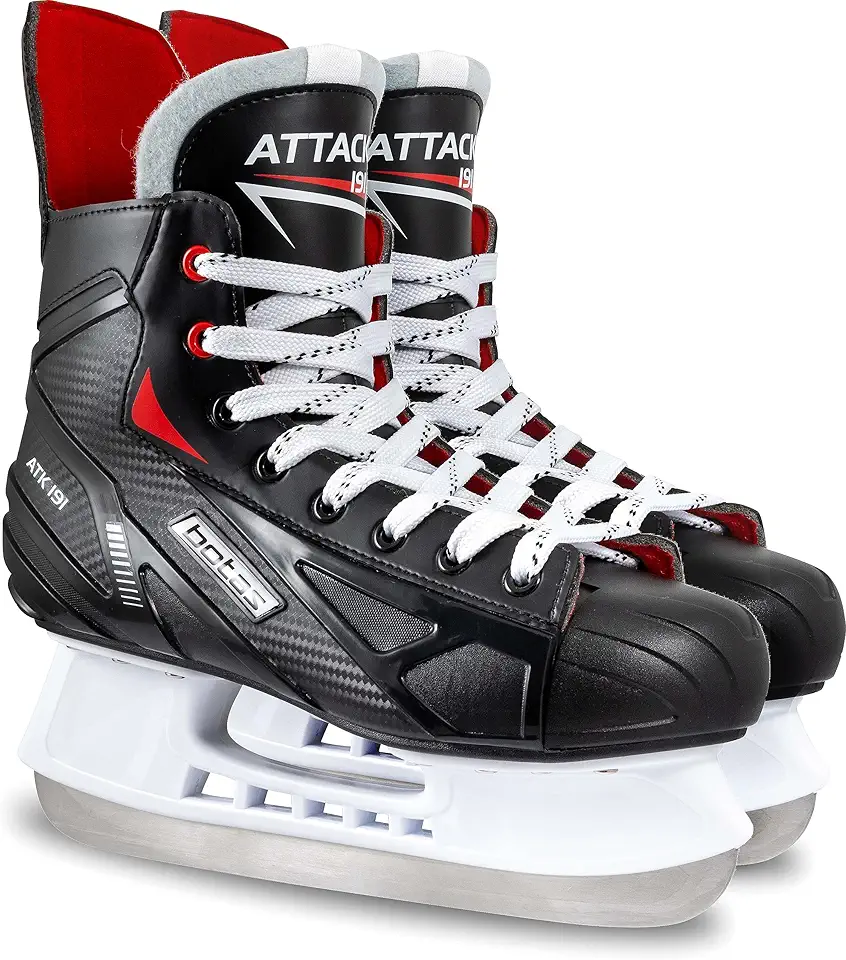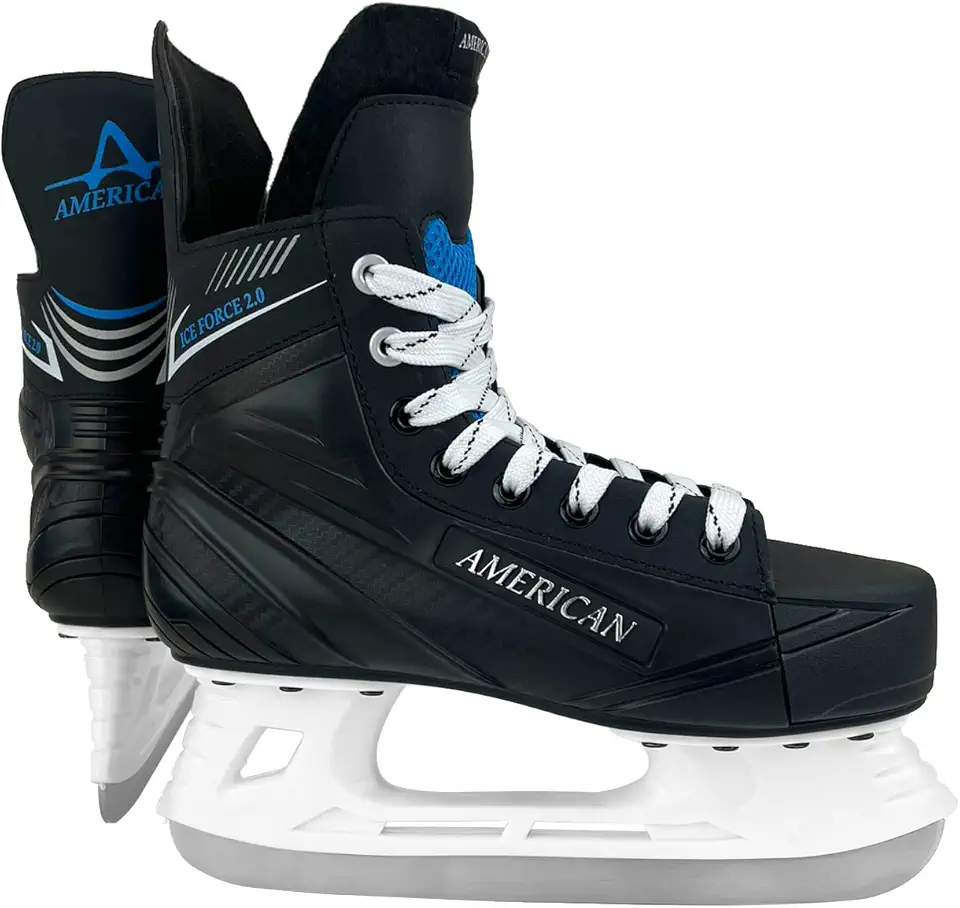When it comes to excelling in hockey, mastering speed and agility is paramount. As a parent or coach, you want your young athletes to develop these skills effectively. In this guide, we’ll walk through the essential hockey power skating drills for speed and agility, supplemented with practical advice, specific drills, and the gear that can aid their progression.
Essential Equipment
Before jumping into the drills, it’s crucial to have the right equipment. Here are a couple of essential items for enhancing your child's power skating experience:
- Roces Men's RSK 2 Skate: This skate is specifically designed for performance with its durable reinforced upper and anatomic padding, providing players with both comfort and support on the ice. It's perfect for young athletes looking to improve their skating skills.
- Hockey Training Equipment, Stick Handling Trainer: This training tool is excellent for developing puck control and will significantly enhance your child's reaction time. It complements skating drills perfectly, allowing for a holistic training approach.
These products can make a significant difference in performance.
Warm-Up and Preparation
Before diving into the drills, a proper warm-up is essential to prevent injuries and prepare the body for rigorous activity. Here’s how to gear up for effective practice:
Stretching Exercises
Start with static stretches targeting critical muscle groups such as:- Hamstrings: These muscles are pivotal for speed. Stretching them will enhance your child's range of motion.
- Quadriceps: Crucial for powerful strides. Focus on standing quad stretches for this group.
- Calves: These muscles help in pushing off during skating; calf stretches can prevent cramps and improve flexibility.
Dynamic Warm-Up
After static stretches, engage in a dynamic warm-up routine that includes:- Leg Swings: Forward and lateral leg swings can help loosen the hips and increase mobility.
- Arm Circles: A few minutes of arm circles prepare the upper body, essential for balance and posture while skating.
- Hip Rotations: These are critical for transitioning and changing direction quickly.
Finally, let the kids take a few practice laps around the rink to get comfortable on the ice. This will not only help them adjust to the surface but also mentally prepare them for the drills ahead.
Drills for Speed
Once your athletes are warmed up, dive into the speed drills that can significantly enhance their skating performance.
Acceleration Drill
This drill focuses on starting from a standstill and reaching top speed quickly. Here's how to perform it:- Start from a stationary position and sprint to the opposite end of the rink.
- Slow down gradually until you come to a full stop.
- Repeat this process for several laps, focusing on explosive starts and gradual deceleration.
For this drill, consider investing in the Botas - Attack Skate. These skates offer excellent support for acceleration and provide a great grip on the ice, aiding every push-off.
Agility Ladder Drill
The Agility Ladder Drill enhances foot speed and coordination:- Set up cones or markers in a straight line on the ice.
- Players weave through them while maintaining optimal speed.
- Focus on maintaining a low center of gravity, which is crucial for balance and speed on the ice.
For enhanced performance, pairing this drill with American Athletic Shoe Men's Ice Force Skate can provide superior agility and comfort.
Plyometric Push-Offs
Plyometric training can develop explosive power:- Position your child at the edge of the rink.
- Instruct them to push off quickly with one foot, sliding on the ice before transitioning to an explosive push with the other foot.
- Repeat this drill to strengthen leg muscles and improve acceleration.
Utilizing the American Athletic Shoe Co. Men's Cougar Soft Boot Skate can also contribute to the effectiveness of this drill, allowing for better mobility and flexion.
Drills for Agility
Agility is crucial in hockey, allowing players to maneuver around opponents and react to dynamic game situations effectively. Here are three important drills to enhance agility:
Figure-Eight Drill
In the Figure-Eight Drill, players will skate in a figure-eight pattern while weaving through cones or markers. This drill helps improve turning and edge control:- Set up cones in a figure-eight formation.
- Skate through the cones making sure to maintain proper technique.
- Focus on quick transitions and control of speed throughout the drill.
T-Drill
The T-Drill enhances directional change and speed:- Set up a T-shaped course with cones.
- Start at the bottom of the T and sprint to the top, then make a quick 90-degree turn and skate back to the starting point.
- Repeat at varying speeds to increase intensity.
This drill not only improves speed but also reaction time as players must quickly adapt to changes in direction.
Reaction Time Training
To further enhance agility, incorporate reaction time training with the stick handling trainer:- Set this training device in a comfortable zone for the player.
- While practicing skating, they can simultaneously handle the puck, helping them become accustomed to juggling control while speeding up.
Using the Hockey Training Equipment Stick Handling Trainer will facilitate this dual aspect of skating and puck control. The coordination gained through this will translate into better performance during actual games.
Cool-Down and Maintenance
After intensive training sessions, cooling down is vital to aid recovery and maintain flexibility. Here’s a recommended cool-down routine:
Stretching Exercises
Revisit the stretching exercises targeting the same muscle groups used during your training session. This will prevent stiffness and facilitate quicker recovery. Focus on the following:- Hamstrings
- Quadriceps
- Calves
Review and Adjust Technique
Take some time after each practice to discuss what went well and what can be improved. Record the sessions if possible. Observe your child's techniques and offer feedback based on what they accomplished. Adjustments can be made progressively over sessions, allowing for steady improvement.Comparison Table
Here's a handy comparison of the skating equipment used in each drill:
| Drill | Botas - Attack Skate | Roces Men's RSK 2 Skate | American Athletic Shoe Co. Men's Cougar Soft Boot Skate |
|---|---|---|---|
| Acceleration | Excellent | Good | Fair |
| Agility Ladder | Fair | Poor | Poor |
| Plyometric Push-Offs | Good | Excellent | Fair |
FAQ
Q: What is the best way to improve my power skating?
A: Practice regularly, focusing on proper technique and continuously incorporating the varied drills listed in this guide.Q: Which skate is best for power skating?
A: The Roces Men's RSK 2 Skate is a highly recommended option for hockey players due to its durability, support, and comfort.Q: Can I use any stick handling trainer for reaction time training?
A: Not all are made equal; it’s important to use a specialized device, such as the Hockey Training Equipment Stick Handling Trainer, designed to enhance puck control and coordination specifically.Conclusion
Incorporating hockey power skating drills for speed and agility into your athlete’s training routine can set them on the path to success. By focusing on fundamental warm-ups, speed drills, agility drills, cooling down effectively, and using the right equipment, your child will improve significantly. With dedication and the right approach, they’ll find themselves better equipped for the challenges of the ice and ready to outmaneuver opponents. Encourage them to stick with it and watch as they transform their skills over time!





